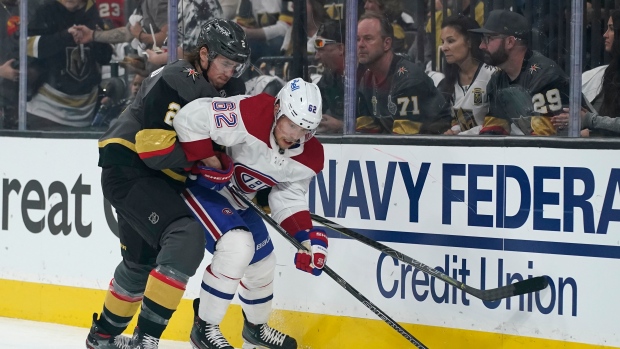Dec 23, 2021
Lehkonen putting on a defensive clinic for struggling Habs
Montreal Canadiens winger Artturi Lehkonen is putting on a defensive clinic amid a tough season for his team. Travis Yost has more.
By Travis Yost

What does it mean to be a great defensive forward in the National Hockey League?
Ask 10 coaches, and you will get 10 different answers. Physical attributes like size, strength, speed, agility, and hand-eye coordination certainly matter. So too does having spatial awareness and playing within structure. Watch enough hockey, and you can quickly delineate which players understand their assignments and which players don’t, which players understand their strengths and limitations, and which don’t.
Measuring defensive play has been one of the most difficult areas of hockey analysis, even with additional insight from the NHL’s Real-Time Scoring System data. There are so many variables that blur our understanding of quality defensive play – the pedigree of teammates around you, the calibre of goaltending behind you, and the strength of the opponents you play can all have sizable impacts.
Still, we know great defensive forwards – much like their blueline counterparts – routinely grade well on two key fronts. The first: opponents generate very few shots when they are on the ice. The second: when opponents do find shooting space, it’s generally from low-risk areas, such as outside of the circles and around the blueline.
Not all great defensive forwards are cut from the same cloth. Compare two notoriously dominant defensive forwards in Boston’s Patrice Bergeron and Las Vegas’ Mark Stone. For years, the Bruins created an oppressive defence through unrelenting offensive-zone pressure – the Bergeron line never really left the offensive third, and it turns out generating shots when you never have the puck is quite difficult.
Stone, on the other hand, may be the most harrowing off-puck defender you can find in the neutral zone. Try to skate by him and his freakish hand-eye coordination at your own risk.
I bring this up because Montreal Canadiens winger Artturi Lehkonen is putting on a defensive clinic amid a horrifying season for his team.
Let’s just consider some defensive measures (these are all at even strength) for Lehkonen relative to the rest of the forwards in the Montreal lineup for a moment:

A league-average defensive forward is going to give up about 2.4 expected goals and 55 shots per 60 minutes, both measures blind to how well the goaltending group behind the player is performing.
In the case of the Montreal Canadiens, it’s fair to say they have lost a bit of their identity from last year – they are 29th in expected goals conceded and 23rd in actual goals conceded, and as you would expect, the majority of the club’s forwards have been under water this year.
But not Lehkonen. In fact, Lehkonen’s numbers are as strong as any player you will find in the league. He’s generally played with Jake Evans and Joel Armia on a checking line this year, and they have had a lot of quiet success amidst a difficult year.
Whereas most of the team has been miserably outshot and outchanced, the opposite is true for Lehkonen. The Canadiens are 74 shots better than the opposition this year with Lehkonen on the ice, and almost all that goodness is coming from stifling defensive play.
What does such stifling defensive play look like? This shot profile tells the story better than I ever could (via HockeyViz):

Only three skaters (Boston’s Bergeron, Brad Marchand, and David Pastrnak) have better expected goal rates against than Lehkonen, which is a remarkable benchmark considering the talent disparities between the two teams.
Perhaps the most interesting question of all: How much is a player like Lehkonen worth to Montreal or another suitor this off-season?
He will be a restricted free agent with an expiring $2.3 million deal. Historically, defensive forwards who struggle to score have difficulty cashing in, and Lehkonen’s 11 points in 31 games isn’t going to move the needle there. On the other hand, we just saw the Los Angeles Kings give Phillip Danault a six-year, $33-million contract on the back of his great defensive play.
It has been a tough season in Montreal but look hard enough and you can find positives. Under the radar, Montreal’s six-year homegrown veteran is having a fantastic year.

